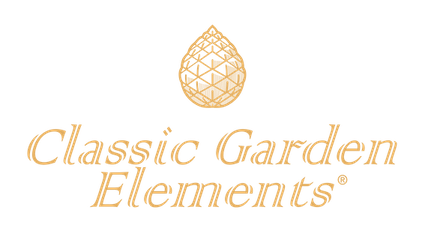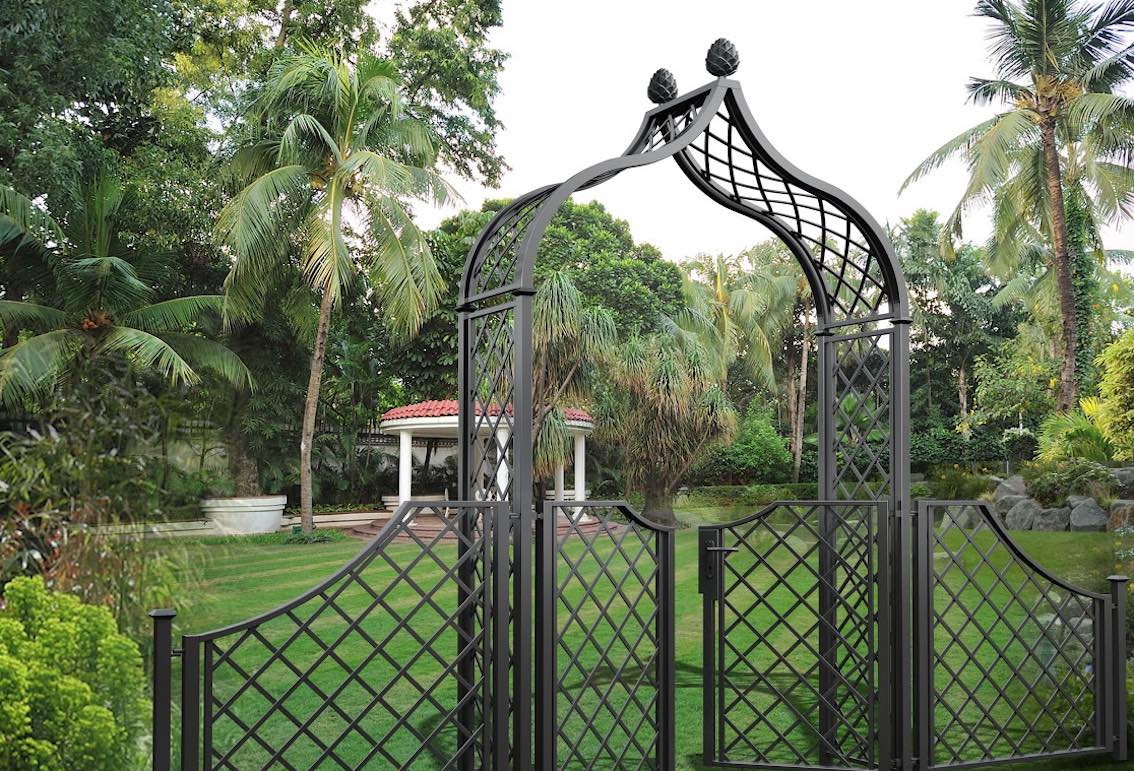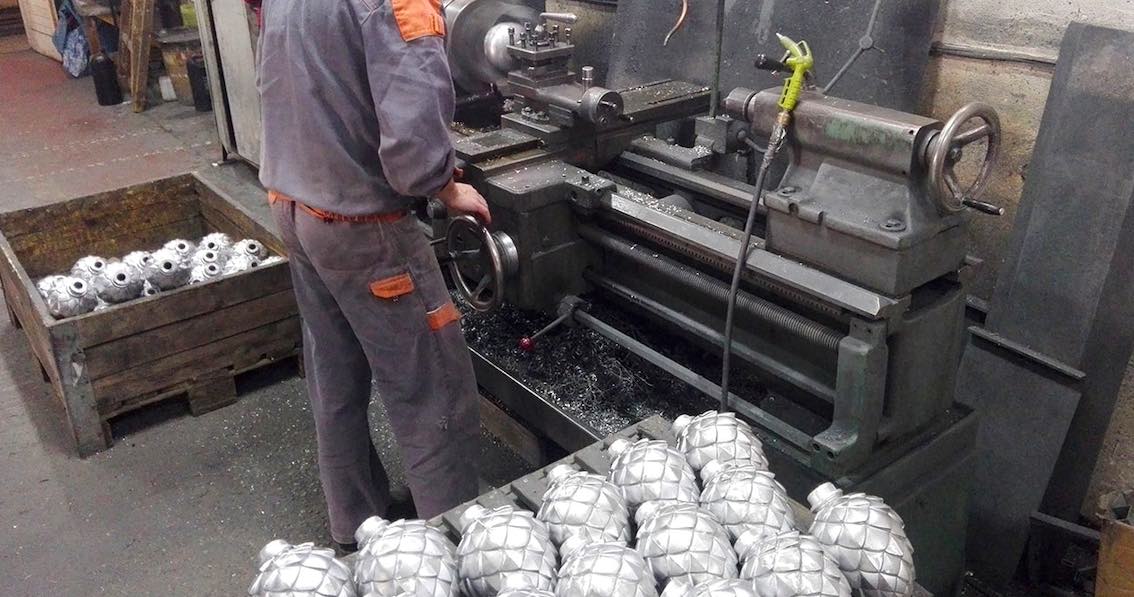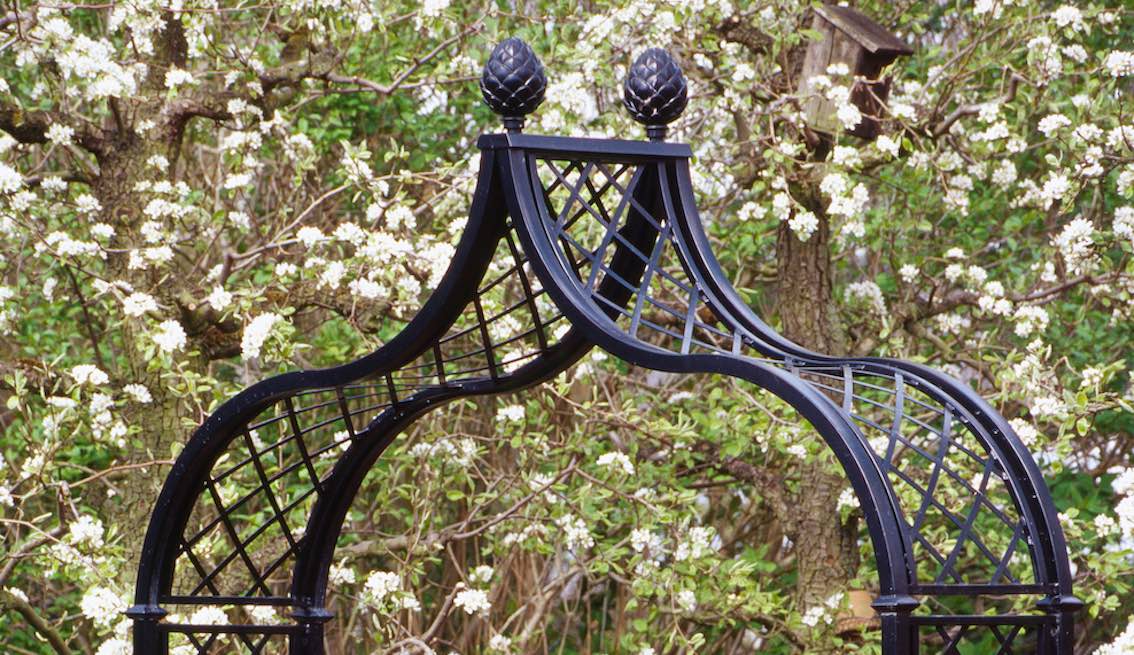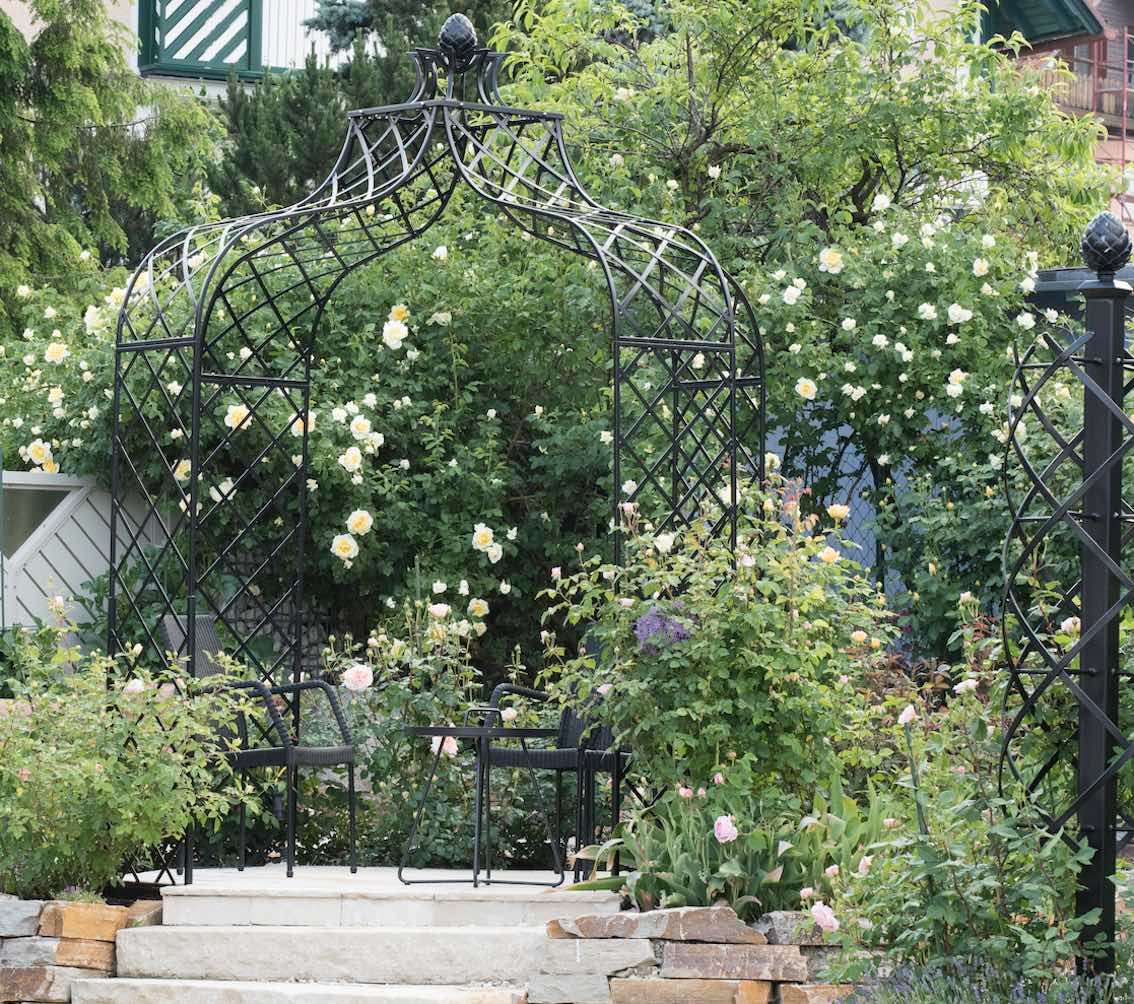The Story behind Our Trademark Classic Garden Elements
Classic Garden Elements’ trademark was inspired by the ancient Etruscan bronze pine cone on display at the Vatican in Rome. The first version of our cone was created over 20 years ago. A sculptor from Trnava, not far from Vienna, made the first mould. In a second version, the pine cone’s scales were opened up significantly, giving it the marked structure it has today. The first copies of this version were cast at a bell foundry in Trenčín in Slovakia.
The pine cone is a symbol of fertility, renewal and immortality and echoes the harmony and beauty we find in the natural world. The cone shown here crowns our Charleston Rose Obelisk, covered in Ballerina roses, as exhibited at the Chelsea Flower Show. Many of our other plant supports are also topped with this distinctive emblem, such as the round Metal Garden Obelisk I, the three-wing Rose Obelisk II, the Gothic-inspired Kiftsgate and Brighton Victorian Garden Arches, the romantic Victorian Arbour, the Kiftsgate Metal Gazebo, the mighty columns of the St. Albans Garden Archway, the Piemont Pergola and the Paravent and Restaurant Metal Fence Panels. Click here to find our Metal Garden Arches and Metal Garden Archways.
